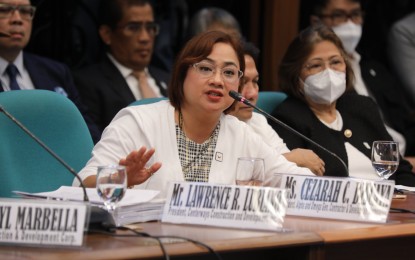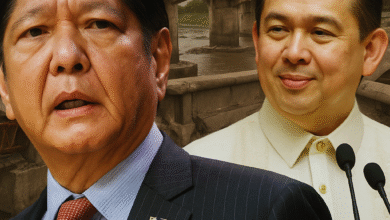
The Discaya Circus Is Hiding the Bigger Crooks
We’re all glued to the Senate drama, watching Sarah Discaya get grilled over nine companies, 40 luxury cars, and contradictory answers. She has become the star villain of the week—flamboyant, flashy, and easy to hate.
But while we’re distracted by the Discaya spectacle, we risk missing the bigger picture: the real power players who created the conditions for this mess in the first place.
The Discayas as Convenient Villains
Discaya’s Senate testimony was messy. She admitted to owning multiple construction firms, contradicted herself about her role in them, and stunned the public with her casual mention of 40 luxury cars. Then came the Customs raid, with Rolls-Royces and Bentleys paraded in front of cameras. Overnight, she became a household name, the face of excess and corruption.
She is, without question, a convenient villain. Young, flamboyant, and visibly wealthy—she fits the public’s image of someone who gamed the system. But here’s the truth: contractors like Discaya only thrive in a system where politicians open the door. She’s a spectacle, but not the mastermind.
Following the Money: Budget Insertions
Here’s what we’re not talking about enough—budget insertions. These are funds that lawmakers channel into their districts through the DPWH. They decide which projects get priority and how much money is allocated.
Contractors like Discaya can only bid on projects after politicians allocate the budget. If ghost or substandard projects exist, it’s not just on the contractors—it’s also on the lawmakers who made sure those projects were written into the budget in the first place. To focus only on Discaya while ignoring the lawmakers is to overlook the engine that fuels the corruption.
Congressmen, Governors, and Mayors as Power Brokers
Every flood-control project has a home district. Someone in power—usually a congressman—requested, lobbied, and inserted that budget item. Yet in the hearings, we rarely hear the names of these politicians. Why is that?
If there are ghost projects, shouldn’t we ask whose districts they were supposed to protect? If there are overpriced contracts, shouldn’t we ask which politicians benefited from the political goodwill of announcing those projects to their constituents?
Contractors may play the game, but it’s the politicians who design the rules. And unless they are summoned, questioned, and penalized, we’re letting them slip away once again.
The Danger of Scapegoating
The “Discaya Circus” is entertaining—cars to ogle, villains to jeer at, soundbites for senators. But focusing only on her turns the scandal into a show. We’ve seen this before: contractors take the blame, while the systemic rot of pork-style insertions stays untouched and politicians quietly walk free.
READ: 2025 Affordable Cars Under 1.5 Million PHP
Don’t Stop at the Contractors
Let’s be clear: Sarah Discaya should answer for her contradictions, her companies, and her questionable fortune. But if the investigation stops with her, we will have learned nothing. We will have fixed nothing.
The bigger crooks, the ones with the power to funnel billions into projects and the political machinery to hide behind contractors, will walk free once more. If we want real accountability, the hearings must expand to include the congressmen who shaped these projects in the first place.
Because if we stop at Sarah Discaya, we miss the chance to fix the rot. Until local politicians face the same heat, we’re only watching a sideshow.




